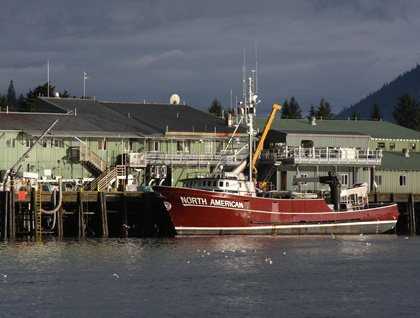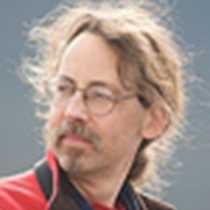We spent the day exploring central Southeast Alaska. We awoke near Ideal Cove and went ashore soon after breakfast. We found a trail that follows a meandering stream. For most, this was our first time in coastal temperate rainforest. We all admired the size of the trees. The conifers from this region are among the tallest in the world. The forest understory was rich and diverse. Huge skunk-cabbage leaves made the place seem more tropical than temperate. Moisture-loving ferns lined the trail. Mosses blanketed the ground and festooned the trees. Dome walkers got to the first of a series of ponds where beavers had been working. Others listened for the bright though simplistic calls of flycatchers, or the fluty, ethereal songs of secretive thrushes.
During lunch, we motored to Petersburg. This town was founded by a fisherman in the late 1800s, and fishing is still its mainstay. We docked among fishing boats, and some followed Carlos around the docks as he explained the several types of fishing boats. Others went to see muskeg. This unusual environment appears to be completely different from the adjacent forest. Here, sphagnum moss impedes decay to the point that there is almost no recycling of nutrients. A strange variety of plants struggles to survive in this harsh but interesting environment. Most took time to walk through Petersburg. Since no large cruise ships come here, Petersburg retains a hard-working, honest charm.
Just before dinner, whale biologist Andy Szabo came aboard to tell us something about the whales we had seen the evening before. Humpbacks are remarkable in size and ponderous elegance, but the more we find out about them, the more remarkable they appear. Andy told us about their wide variety of foraging techniques that require long-term and exact memory, cooperative friendships lasting decades, and tool-use.
After a feast of fresh Dungeness crab, we heard about formline design, the striking art tradition indigenous to the Northwest Coast, and how to recognize the creatures used as crests on totem poles, boxes and masks.
As might be expected, our first delving into natural and cultural history of a region as famous as Southeast Alaska reveals a world far more complicated, beautiful and interesting than initially meets the eye.







